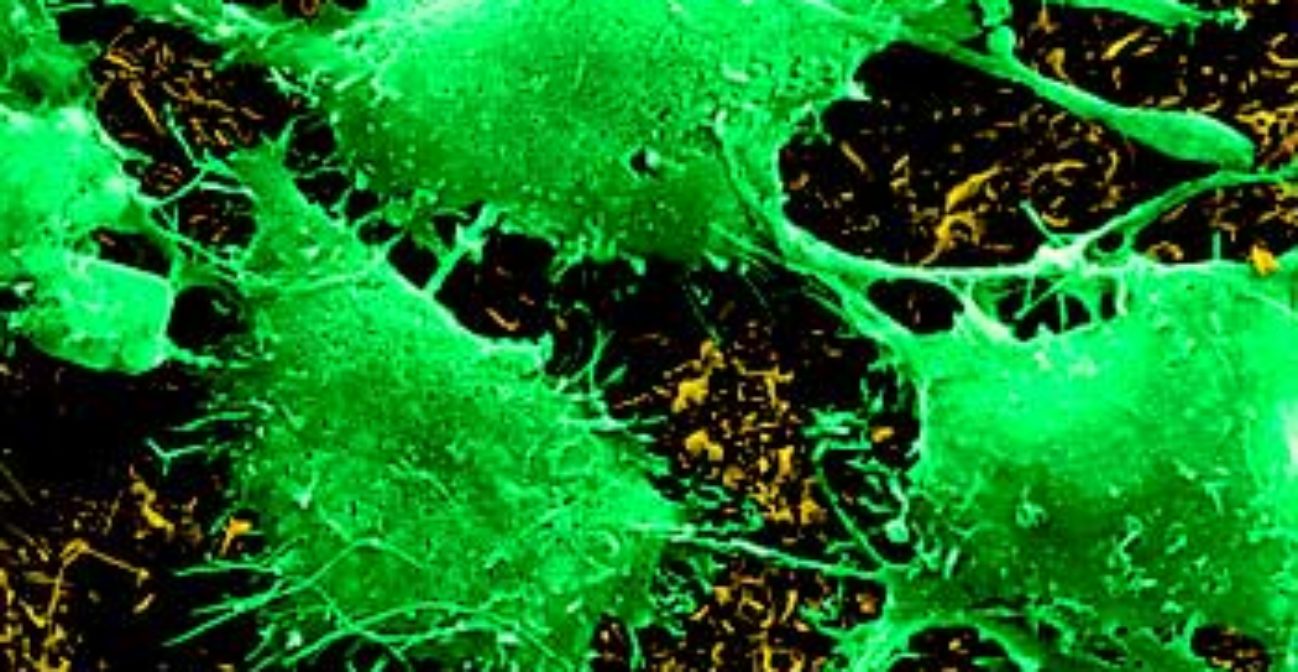Join us for conversations that inspire, recognize, and encourage innovation and best practices in the education profession.
Available on Apple Podcasts, Spotify, Google Podcasts, and more.

Cancers, though studied for decades, continue to amaze researchers with their complexity. This unit reveals new information on normal cell function, proto-oncogenes and tumor suppressor genres, current research in drug design, as well as an overview of tumor biology and angiogenesis.
ONLINE TEXTBOOK
The online textbook chapters support and extend the content of each video. The Web version can be viewed as a full chapter or as individual sub-sections, and includes links to glossary terms and other related material.
ANIMATIONS & IMAGES
Explore the archive of animations, images and figures from the videos and online textbook. All of the images can be viewed online or downloaded as jpg files.
EXPERT INTERVIEW TRANSCRIPTS
Read profiles of the expert scientists featured in the video and find the complete transcripts of the interviews conducted for this unit.
Elizabeth Blackburn, Ph.D.
Brian Druker, M.D.
Leland Hartwell, Ph.D.
Mary-Claire King, Ph.D.
Robert Weinberg, Ph.D.
Introduction
What Is Cancer?
Genetics of Cancer
Cell Cycle
What Causes Cancer?
Tumor Biology
Viruses and Cancer
Environmental Factors
Detecting and Diagnosing Cancer
Traditional Treatments
Newer Treatments
Preventing Cancer
Screening, Genetic Tests, and Counseling
Anaplastic
A term used to describe cancer cells that divide rapidly and have little or no resemblance to normal cells.
Angiogenesis
Blood vessel formation. Tumor angiogenesis is the growth of blood vessels from surrounding tissue to a solid tumor. This is caused by the release of chemicals by the tumor.
Book
Schneider, K. 2001. Counseling about cancer: Strategies for genetic counseling. 2d ed. New York: John Wiley & Sons.
![]() Excellent information on the causes of cancer, genetic tests for predisposition to cancer, ethics, and genetic counseling.
Excellent information on the causes of cancer, genetic tests for predisposition to cancer, ethics, and genetic counseling.
Articles
Bahls, C. and M. Fogarty. 2002. Reining in a killer disease. The Scientist16[11]:16.
![]() An outline of several approaches to controlling cancer.
An outline of several approaches to controlling cancer.
Gibbs, W. Wayt. 2003. Untangling the roots of cancer. Scientific American, July, 57-65.
![]() New evidence challenges old theories of how cancer develops.
New evidence challenges old theories of how cancer develops.
Kling, Jim. 2003. Put the blame on methylation. The Scientist 16[12]:27-28.
![]() Gene silencing by methylation rather than by gene mutation may create some cancer cells.
Gene silencing by methylation rather than by gene mutation may create some cancer cells.
McCook, A. 2002. Lifting the screen. Scientific American, June, 16-17.
![]() Developing protein “fingerprints” to screen for cancer.
Developing protein “fingerprints” to screen for cancer.
Rayl, A.J.S. and Lewis, R. 2001. In cancer research, diet and exercise roles Strengthen. The Scientist 15[20]:17.
![]() Evidence for the importance of lifestyle in preventing cancer.
Evidence for the importance of lifestyle in preventing cancer.
Veggeberg, S. 2002. Fighting cancer with angiogenesis inhibitors. The Scientist 16[11]:41.
![]() Discussion of a class of drugs that helps to prevent angiogenesis.
Discussion of a class of drugs that helps to prevent angiogenesis.
Wilson, J. F. 2001. A dual role for CDK inhibitors. The Scientist 16[6]:20.
![]() Discusses approaches to cancer treatment using cells cycle inhibitors.
Discusses approaches to cancer treatment using cells cycle inhibitors.
Wilson, J. F. 2002. Elucidating the DNA damage pathway. The Scientist16[2]:30.
![]() How researchers have deciphered the role of DNA damage repair in cancer.
How researchers have deciphered the role of DNA damage repair in cancer.